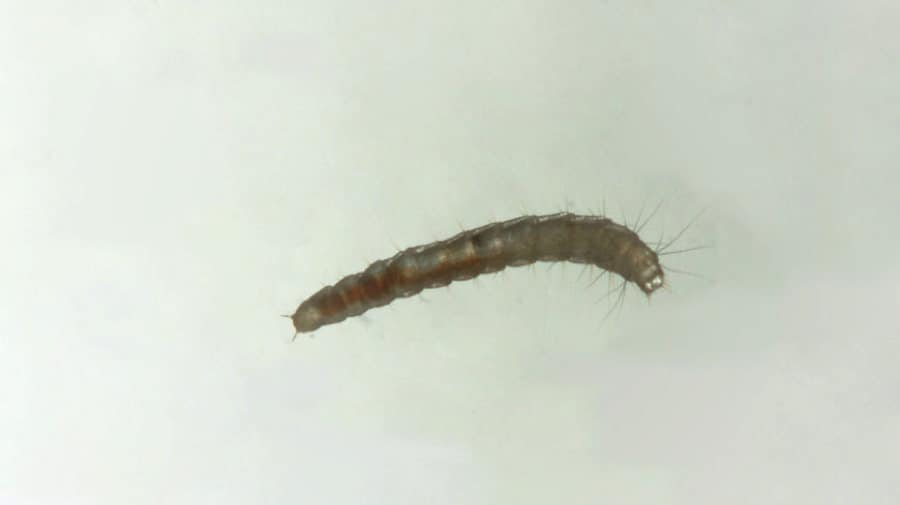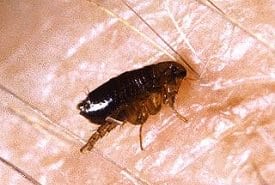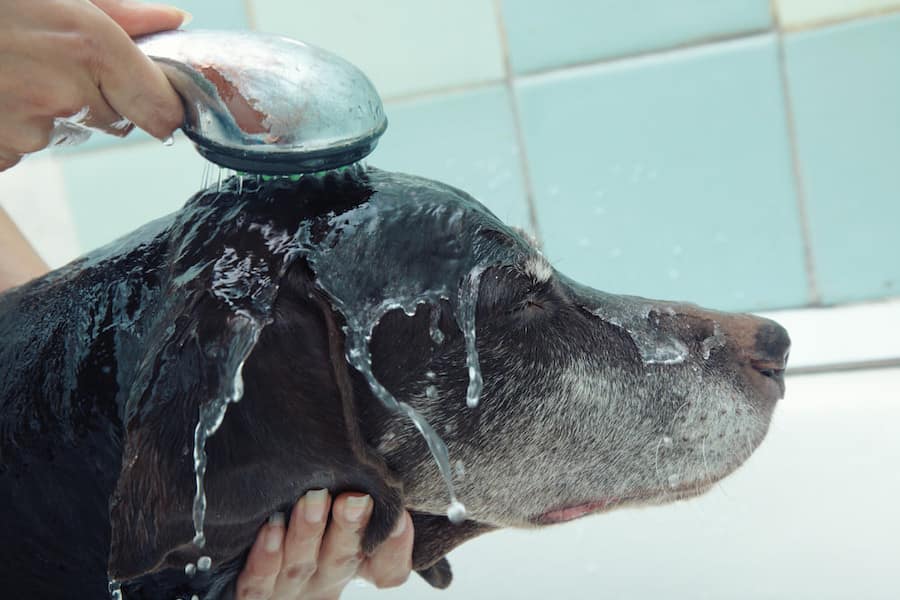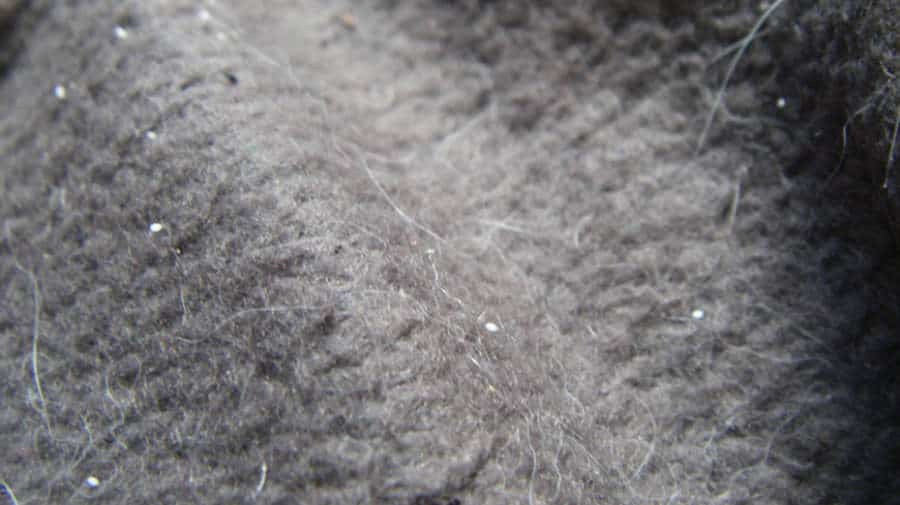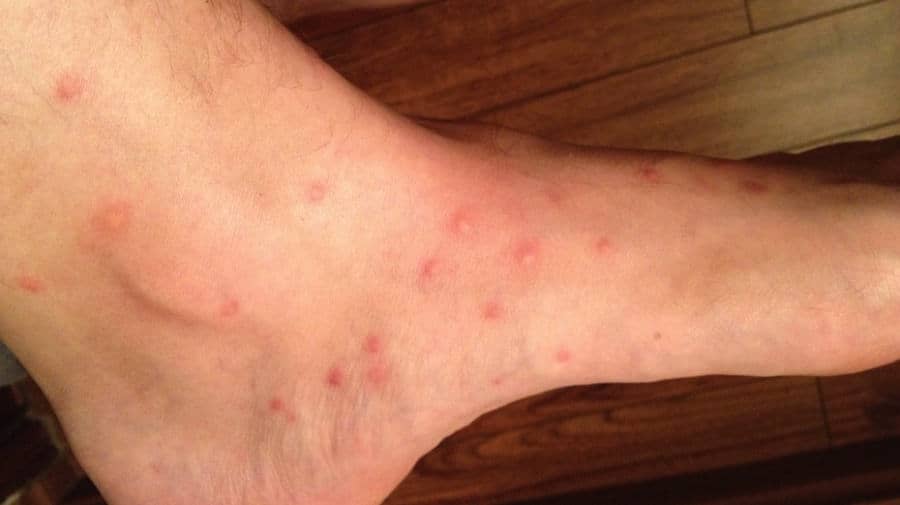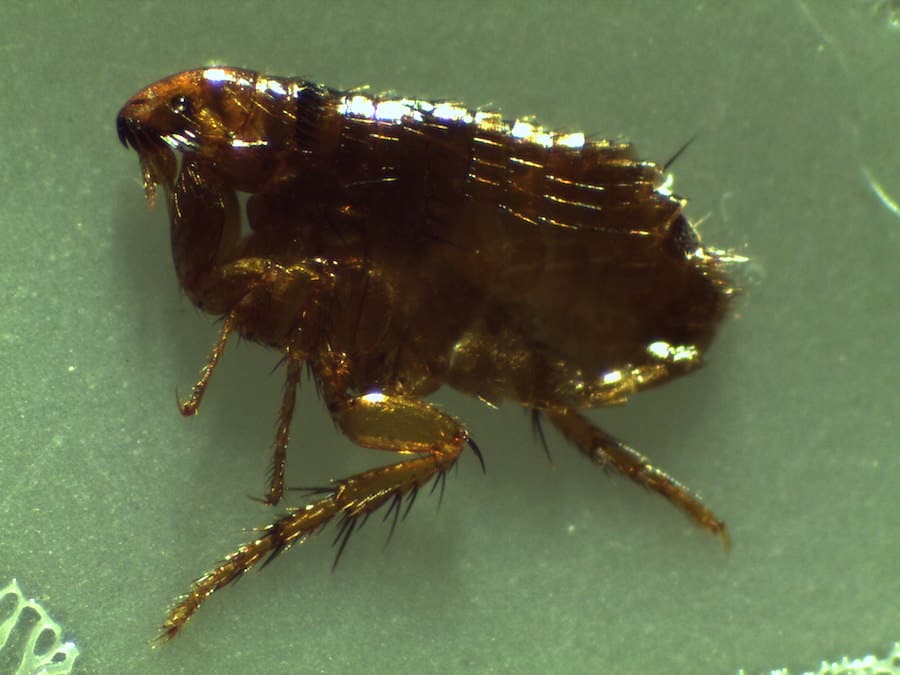Flea Eggs on Dogs
The discovery of flea eggs on your dog is a sure sign that the little bloodsuckers have been living among the fur for a while. Depending on how advanced the infestation is, the dog could already be suffering. Allergic reactions to flea saliva, (irritated skin, hair loss, etc) and anemia due to blood loss, are some of the more severe symptoms, although with proper treatment, you have a great chance to prevent it from getting to this point.
What Do Flea Look Like On Dogs?
It is important to keep a keen eye on your dog, to ensure that you don’t miss the more common and telling signs of a flea infestation. To do so, you must first know what the flea eggs look like, so you’re aware of what to look for.
Flea eggs are tiny and very easy to miss. Ranging from0.1 mm – 0.5 mm in length and around 0.3 mm in width, these pearl-white eggs are even better concealed in dogs with pale-colored fur. They have an oval shape with a smooth surface, and are non-stick so they spread without difficulty.
To conjure the image of just how small flea eggs are, imagine the tip of a pencil or pen. Now, note that the tip of a sharpened 1 mm pencil is still double the size of a flea’s egg.
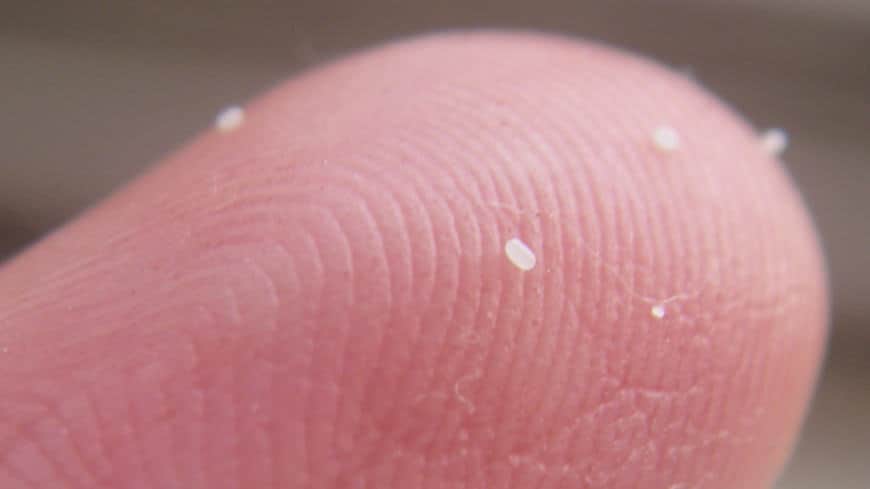
There are two elements that can be mistaken for flea eggs, but with the correct knowledge, you won’t be in the dark again.
“Flea dirt” – reddish-black specks also found in a dog with fleas – is often mistaken for flea eggs. This is actually droppings (flea feces), from the animal’s unwanted guests.
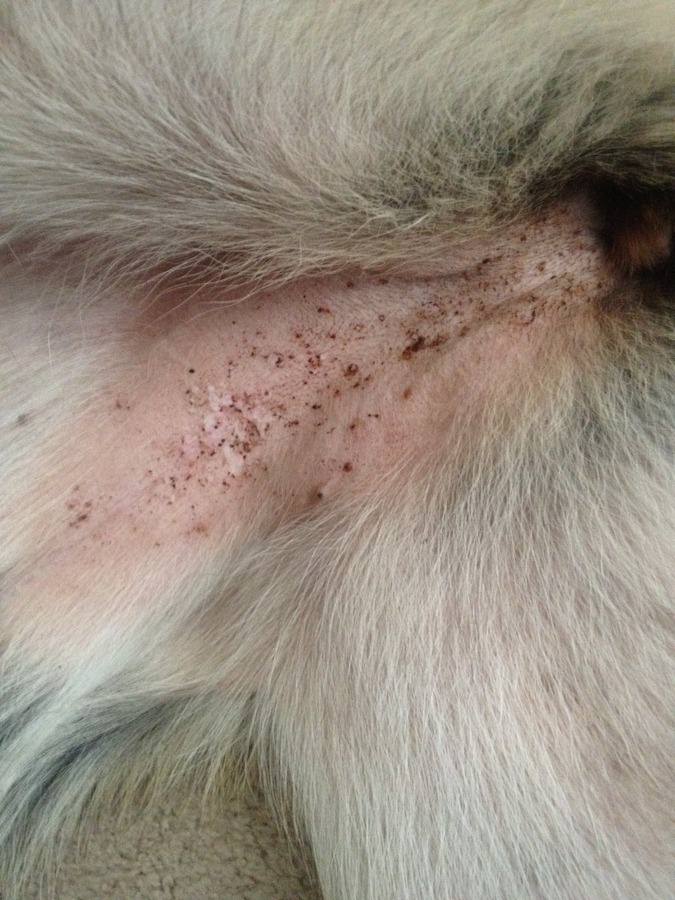
The other element is dandruff, which may be a bit harder to distinguish from the eggs. However, as dandruff sticks and the eggs are non-stick, the evidence will become clear.
Where Are the Most Common Areas on a Dog to Find Flea Eggs?
Adult fleas are prone to staying with a chosen host throughout their lifespans. As such, they lay their eggs on this host as well. Fleas prefer dogs’ hindquarters as their home base. This is because dogs are unlikely to groom that area very much and fleas love areas where they can feed and lay eggs in relative peace.
Another more biologically-focused reason is that fleas are quite happy in warmer climes. They will seek out humid areas that heat up to approximately 25 degrees Celsius. Dogs provide the perfect “weather” and adult fleas are able to quickly mature, lay eggs and continue the cycle until their time has passed.
It stands to reason that most flea eggs are laid in this general vicinity. In my opinion, the results wouldn’t vary too much if other spots were chosen for the purpose of laying eggs. The non-stick nature of these eggs, can be likened in very basic terms to pollen. They are not spread through the air as the pollen is, but they do often end up being distributed both indoors and outdoors, as the dog moves around.
Eggs don’t fall off dogs as soon as they are laid, but it doesn’t take long for this to happen. Hair length is one factor that aids in rapid egg drops. More importantly are the dog’s movements and grooming practices. Though some eggs may be left behind after all this activity, it would be a small percentage compared to the thousands that can be laid by one female in a month.
Instead, you’ll find fewer flea eggs on your dog, and more “buried” into a carpet or rug. They may also be found scattered in corners or other surface areas indoors, in fact anywhere that your pet frequents. Outdoors, the dog house, and any other areas where dogs generally rest or wander, will also be littered with flea eggs.
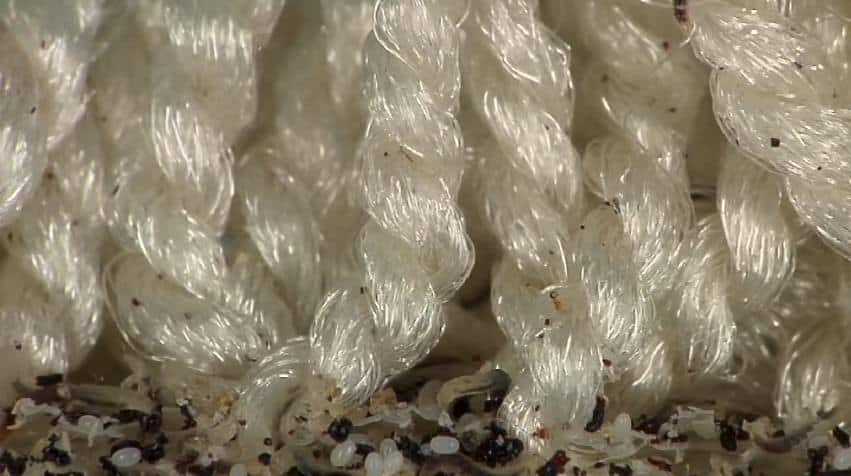
How to Get Rid of Flea Eggs on Dogs
While there are many ways that dogs get fleas, luckily there are also a bunch of solutions in which you can stop the spread of these pests. Using a selection of those, that will be mentioned below, you can achieve optimal results. Let’s take a look at some options to get rid of flea eggs on dogs and in the home.
Dog collars are fine for letting others know your dog has an owner, but they can be multipurpose too. I suggest investing in a flea collar containing IGR (insect growth regulator), sometimes referred to as “egg-stopper” collars. As the name suggests, these are designed to stop eggs from hatching for several months. Active ingredients in these collars should be pyriproxyfen or methoprene.
When activated and placed on your dog, the collar releases a substance that spreads along the body through the oils on his fur and skin, killing fleas, eggs and larvae on contact.
Some egg-stopper collars are available as brands that offer dual-action. In these cases, the collars propose protection from both fleas and ticks. They are usually available through veterinarians and pet stores.
Once you have treated your dog, the next step is to turn your attention to the home and the dog’s environment. Vacuums are excellent for purging carpets, couches, rugs and general areas, of not only flea eggs, but flea dirt as well. I find water-based models to be a better choice for this job. They use water pressure to get rid of harmful pathogens, bacteria and viruses, along with regular functions, such as dirt and flea egg removal.
We haven’t even stepped outside yet, and another must-do is thoroughly washing all pet bedding. I recommend soaking the bedding in boiling water for at least five minutes before washing. This process will get rid of any eggs, kill larvae and also adult fleas.
Make washing dog bedding, stuffed toys, and other cloth-based items a habit. Items should be washed at 60 degrees Celsius. This will ensure that any microorganisms, like fleas and their eggs, and other germs are all destroyed. I have found that baking soda, lemon juice, white or apple cider vinegar, and detergents specifically for pet beds, do a fine job of eliminating these pests.
Grooming your dog has more value than improving a healthy look and shine. Here’s where you take the battle against flea eggs and fleas outdoors. Use a flea comb to thoroughly groom your pet and brush away any fleas or eggs, which may be hiding in the fur. Additionally, use flea shampoo as a follow-up, and wash your pet in warm water.
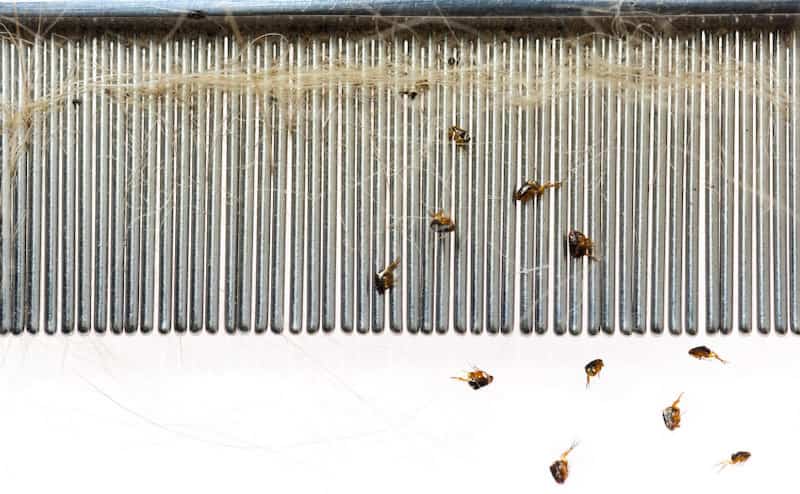
How to Prevent Fleas From Laying Eggs on Dogs
I always like to say that prevention is always better than cure. Why wait until your pet or home is flea-infested, to deal with flea eggs? Instead, here are some of the ways that you can avert their company beforehand.
Modes of prevention are similar to those used for getting rid of the eggs altogether. Going through the process of deep-cleaning your home, pet areas, bedding and associated items, and washing your dog with flea prevention products, all impede the chances of fleas and eggs accessing your home in the first place.
An IGR flea spray – natural or chemical, is good for treating kennels, furniture and areas where your dog usually roams. While these do not kill adult fleas or pupae, they will not allow flea eggs or larvae to mature. As long as the flea eggs are deposited on treated surfaces, their path to adulthood is effectively stopped.
An orally-administered option for keeping flea eggs at bay, is flea egg development inhibitors. The tablet dosage varies, depending on the dog’s size, and in some cases can be administered just once a month, with food. When an adult female flea consumes the active ingredient, lufenuron, it is passed on to her eggs. This works against the eggs, which are then unable to hatch.
Ask your veterinarian about these kinds of products. While you can find them available online, note that some, like Program from Novartis, may be discontinued or harmful for use. Therefore, it is advisable to ask for recommendations based on your dog’s breed and medical history.
Another option is to apply flea drops. This aids in repelling fleas so that they are unable to lay eggs. For best results, I recommend choosing a product that works for both eggs and adult fleas. Remember, if the eggs aren’t able to hatch, but the adults are still around to lay them, you’ll soon be back to square one all over again.
As with pills, the amount administered is determined by your dog’s weight. If you are unsure about this, you can ask your veterinarian for advice. An overdose of powerful chemicals can be fatal to your dog. There are also pre-packed containers with varying quantities of the solution, according to weight. These are helpful as long as you know your dog’s weight range.
The final step is the application. It’s easy to just drop them anywhere, but you need to administer the flea drops directly to your pet’s skin. Their skin will absorb the product. If they end up in the dog’s fur alone, they will not be able to do their work, and therefore be unsuccessful at fending off fleas.
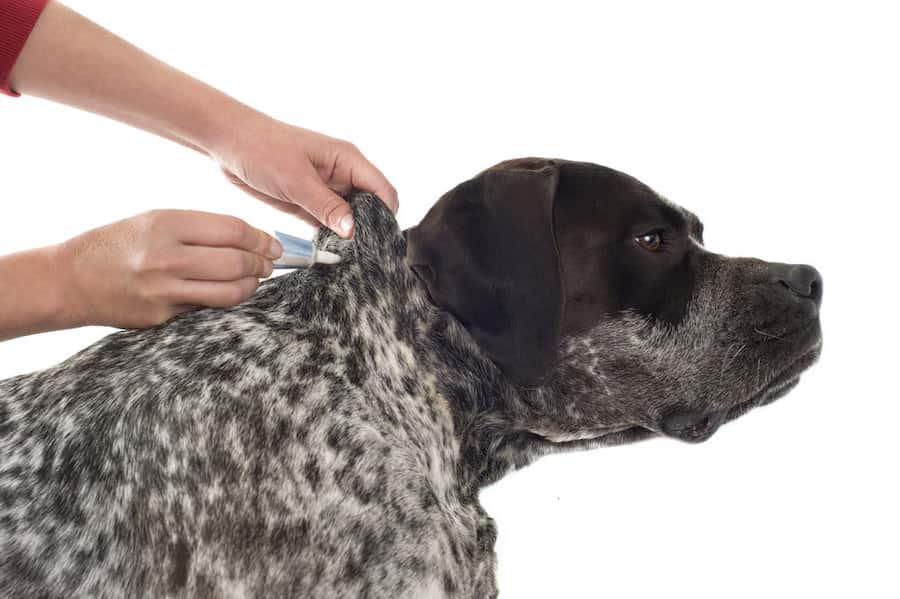
Summary
Flea eggs on dogs might be difficult to see with the naked eye, but if you know what you’re looking for – which you do now – it won’t be long before you are able to rid your dog of them.
By conducting regular checks of your pets, and the areas they most frequently occupy, you can prevent potential flea infestations, or curb pending attacks. With easy to apply remedies and systems in place, your dog – and your home – will always be free of fleas and flea eggs.

